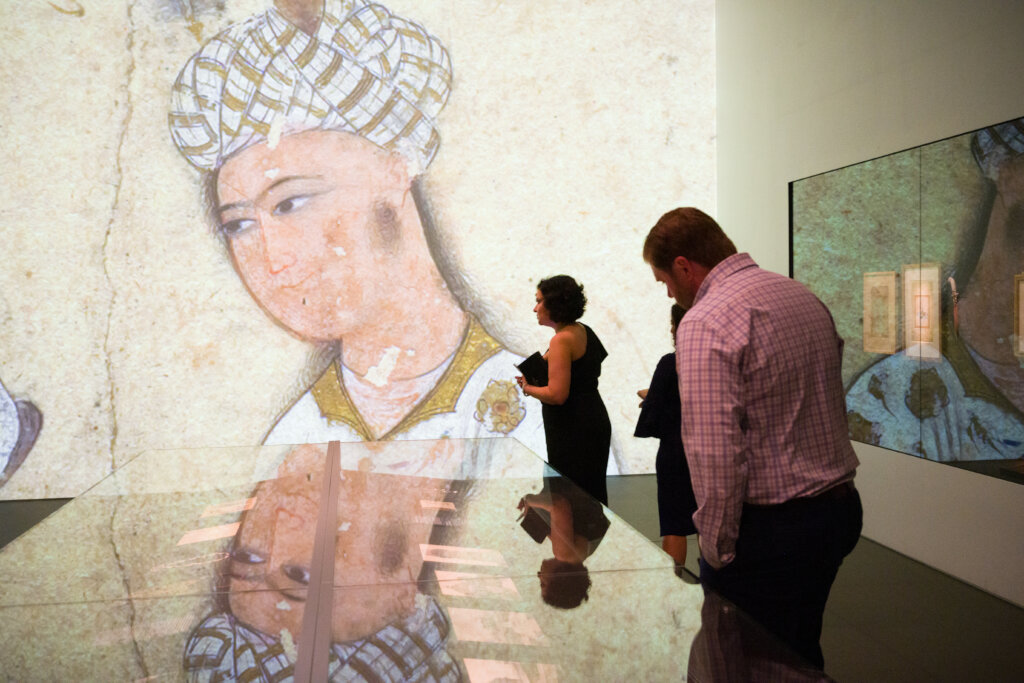American Muslim Arts and Culture: A Tapestry of Identity, Expression, Understanding

Muslim arts and culture are a significant and evolving element of the broader American culture. Artists discover essential ways to express their identities and experiences in this field while also challenging the prevalent prejudices.
This community has contributed towards numerous artistic mediums including literature, music, film, visual arts and performance. Each of these formats provides a different perspective for observing, discussing and understanding the challenges these Muslims face in America.
In recent years, there has been a surge in the fame and popularity of Muslim American artists. Muslim representation in major cultural venues, such as galleries and film festivals has grown exponentially.
Music websites like SoundCloud and YouTube have much more American Muslim musicians than before, with a variety of genres addressing social issues and community-related themes.
Poetry, essays and novels by American Muslim authors are becoming popular and appreciated. They represent a variety of experiences and viewpoints, ranging from intimate accounts of immigration and identification to more general critiques of social mores.
Social media has become a powerful tool for these artists to make their voices heard. Many use platforms like Instagram, Twitter and TikTok to share their work directly with audiences. Artists from different backgrounds collaborate as well, resulting in a sense of community and mutual support.
Challenging Stereotypes Through Art
The strength of American Muslim art lies in its ability to confront and dismantle harmful stereotypes and misconceptions about Muslims. They provide counter-narratives to the often oversimplified portrayals of Muslims in mainstream media.
Filmmakers have produced documentary works that explore the rich tapestry of Muslim life in America. These documentaries highlight the diversity within the community and show how faith influences individuals' lives in different ways. Visual art plays an equally important role in challenging narratives.
Muslim characters are often portrayed in relatable, everyday themes. Mediums such as graphic novels, paintings and mixed media can prompt viewers to reassess their preconceived notions. These artists magnify those who are often marginalized through their creativity and art, forcing the audience to engage with the complexities and nuances of American Muslim identity.
Cultural Expression and Identity
American Muslim art serves as a crucial platform for expressing the identity and cultural heritage of its creators. Many artists infuse their works with personal experiences, drawing up on their faith and cultural backgrounds. The medium of literature is a prominent domain through which these artists express themselves.
Their poetry and fiction reflect themes of belonging, displacement, and the search for one's place in a diverse society.
Musicians also contribute to this exploration of identity through a fusion of traditional and contemporary sounds. They blend Islamic musical influences with genres such as hip-hop, jazz and pop, creating a space where the richness of Muslim traditions is celebrated, while also addressing contemporary experiences in the United States.
The lyrics often highlight social issues such as racial justice, immigration, and interfaith dialogue.
 Mahershala Ali is a Muslim American actor who won the Academy Award for Best Supporting Actor in 2017 and 2019
Mahershala Ali is a Muslim American actor who won the Academy Award for Best Supporting Actor in 2017 and 2019
Visual artists create a distinctive aesthetic that merges traditional practices with modern influences, through incorporating Islamic motifs and cultural symbols in their work frequently.
Artists explore the themes of spirituality, identity, and belonging, which offers the viewers, insights into the lived experiences of American Muslims. This not only serves as a personal expression but also as a contribution to a more inclusive cultural narrative.
Building Bridges Through Artistic Dialogue
There is too much potential in American Muslim art to nourish dialogue and understanding between communities. Art allows people to connect over shared experiences and values through its unique ability to transcend cultural and religious boundaries.
The festivals and exhibitions focused on American Muslim art and culture play a crucial role. These events promote interfaith dialogue and collaboration, providing safe spaces for individuals from different backgrounds to engage in meaningful conversations and learn about one another's cultures.
Collaborative artistic projects that bring together individuals from various faiths and backgrounds often result in powerful outcomes. For example, communities have come together to create art installations that highlight shared values such as compassion, justice, and peace.
In an age where divisions often overshadow commonalities, such initiatives encourage intercultural exchange and social cohesion.
Art can also act as a catalyst for social justice movements. Many American Muslim artists address urgent issues affecting not only their communities but also society at large.
Through their work, they advocate for equality, equity and justice, often collaborating with other marginalized groups to amplify their messages.




